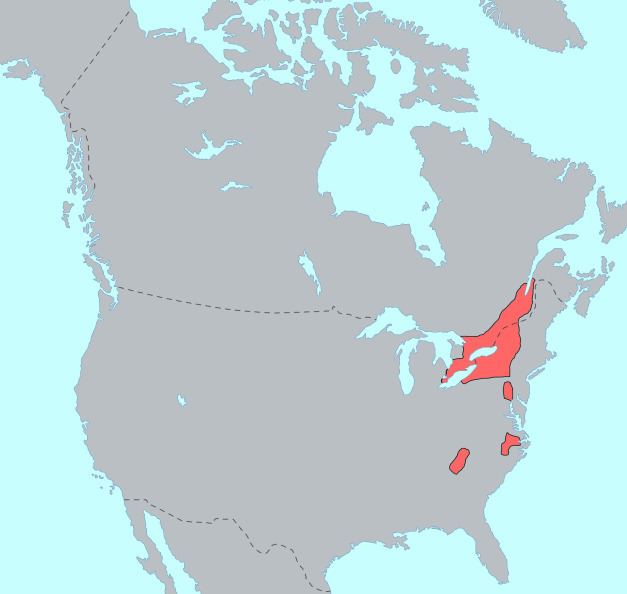Glottolog: iroq1247 | ISO 639-2 / 5: iro | |
 | ||
Subdivisions: CherokeeNorthern Iroquoian | ||
The Iroquoian languages are a language family of indigenous peoples of North America. They are known for their general lack of labial consonants. The Iroquoian languages are polysynthetic and head-marking.
Contents
Today, all surviving Iroquoian languages except Cherokee and Mohawk are severely endangered, with only a few elderly speakers remaining.
Family division
In 1649 in the middle-Beaver Wars, the tribes constituting the Huron, and Petun (Tobacco) confederations were displaced by war parties from Five Nations villages (Mithun 1985). Many of the survivors gathered, displaced away from Lake Erie well to the north of their previous territories, ultimately forming the Wyandot nation. Between 1650-55 the Neutral, Wenro, and Erie nations in succession were also destroyed in territorial wars of aggression previously unknown and uncharacteristic of Amerindian behaviors before European contact.
'Southern Iroquoian'Tuscarora–Nottoway'Unclear'(†) — tribes and language are extinct.
Scholars are finding that what has been called the Laurentian language appears to be more than one dialect or language.
Ethnographic and linguistic field work with the Wyandot tribal elders (Barbeau 1960) yielded enough documentation for scholars to characterize and classify the Huron and Petun languages.
The languages of the tribes that constituted the tiny Wenrohronon, the powerful Susquehannock and the confederations of the Neutral Nation and the Erie Nation were very poorly documented. They are historically grouped together, and geographically the Wenro's range on the eastern end of Lake Erie made them abutting neighbors sandwiched between the two larger confederations. To the east of the Wenro beyond the Genesee Gorge was the lands of the Iroquois and southeast beyond the head waters of the Allegheny River lay the Susquehannocks. The Susquehannocks and Erie were militarily powerful and respected by neighboring tribes. These groups were called Atiwandaronk, meaning 'they who understand the language' by the surviving Huron (Wyandot people). By 1660 all of these peoples but the Susquehannocks and Iroquois were defeated and scattered, migrating to form new tribes or to be adopted into others—the practice of adopting valiant enemies into the tribe being a common cultural tradition of the Iroquoian peoples.
The group known as the Meherrin were neighbors to the Tuscarora and the Nottoway (Binford 1967) in the American South and may have spoken an Iroquoian language. There is not enough data to determine this with certainty.
Iroquois linguistics and language revitalization
As of 2012, a program in Iroquois linguistics at Syracuse University, the Certificate in Iroquois Linguistics for Language Learners, is designed for students and language teachers working in language revitalization.
Six Nations Polytechnic in Ohsweken, Ontario offers Ogwehoweh language Diploma and Degree Programs in Mohawk or Cayuga.
